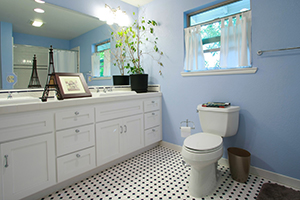The components of a low voltage lighting system and electrical wiring were installed in some homes beginning in about 1946’s. This system was popular and was installed in many homes between 1960 and 1985 and currently used in Ontario today.The low-voltage wiring system uses small-gauge copper wires, connected to low-voltage switches to switch on and off relays, which in turn control the operation of lights and where desired, electrical receptacles, and other 120-Volt equipment in homes.The low-voltage electrical wiring system popularized in the United States by GE® and Remcon permits the use of less-costly and easier-to-install wiring between the relays and the switches in the home. The switching relay, or a group of them, is often located in an electrical box in the building’s attic, garage, or basement. Many original GE® or Remcon® low voltage lighting systems are still in use today. But owners of buildings with the original systems installed may find themselves faced with low-voltage switches, relays, or transformers that no longer operate.Power Supply: This component feeds electrical power to operate the low voltage switches and relays in the system. The transverter is step-down transformer which is itself powered by a 120V circuit in the building converts its incoming 120-volt alternating current (120 VAC) to a 28-volt direct current (28 VDC). This is the operating voltage and current type used to power the switches and the relays that they turn on and off.
Switching Relays: The switching relays in a low-voltage electrical system are turned on or off by low voltage wires coming from the switch. Separately, 120V 15-Amp wires bring electrical power into the switch, and similar wires are connected between the switch and the light, electrical outlet, or other 120V device it is intended to control. When the relay is switched “on” it sends 120V to the device it controls. When the relay is switched “off” it stops delivering power to the device it controls.
Low Voltage Switches: these switches, mounted at the normal height and location in rooms in the building are used to turn normal 120-Volt building lights, electrical receptacles, or perhaps other 120V devices in the building on and off. Because installing individual switches and their wiring is lower in cost than installing a 120-volt-rated switch and wire in the same location, a low-voltage-wired home may have multiple switches in multiple locations all controlling the same light or other device.
Low Voltage Wiring: Very thin copper wires, typically #22 gauge, is used to connect the low-voltage switches to the relays that each switch controls.
Normal Voltage (120V) wiring: “normal” building electrical wires, typically #14 gauge (for 15-Amp circuits), is used to carry electrical power into and then out of the low-voltage relay and on to the light, electrical receptacle, or other device that the switch and relay are intended to control.
Electrical Devices: lights, receptacles, other. These are the same conventional electrical lights or electrical receptacles found in buildings. In the United States most electrical lighting and electrical receptacles are wired to carry 120 Volts A. C. (electric lights and electric receptacles used to power TV’s, computers, etc.) or in special cases, 220V A. C. (such as for electric stoves, electric water heaters, and some air conditioning systems).
For more questions regarding low voltage wiring or relays consult an Ontario electrician at United Plumbing Heating Air & Electric.





